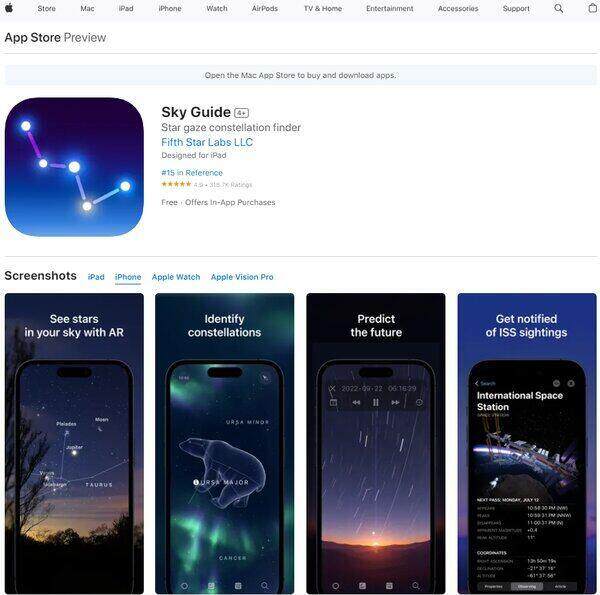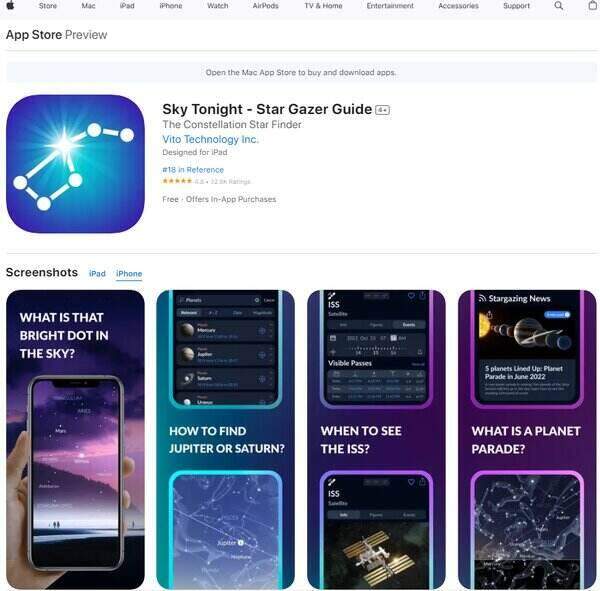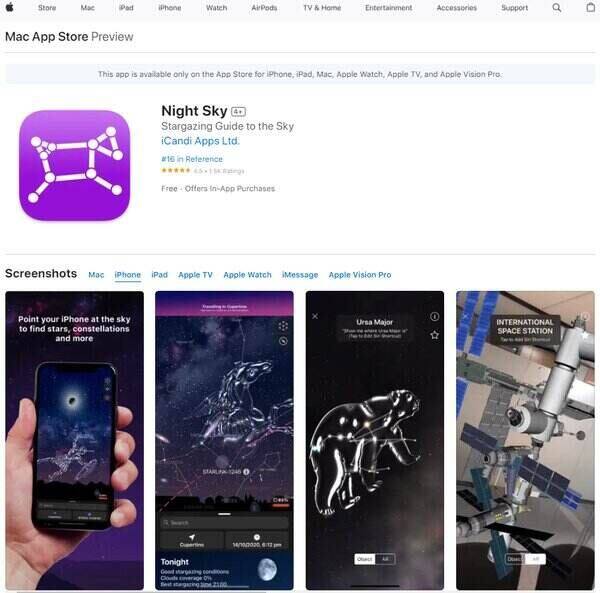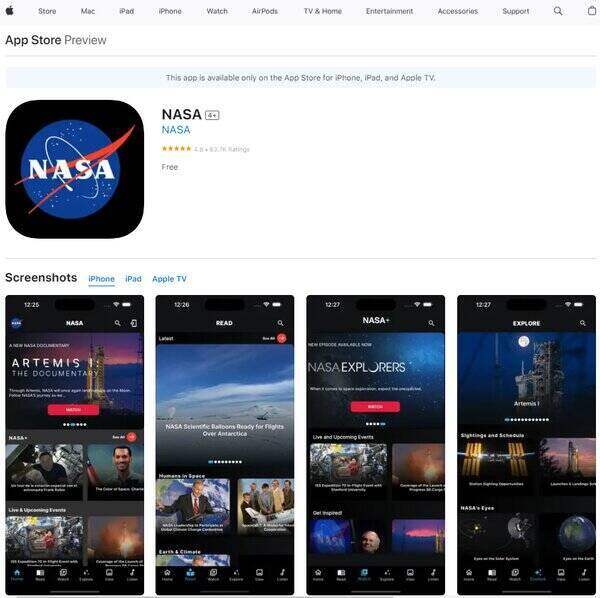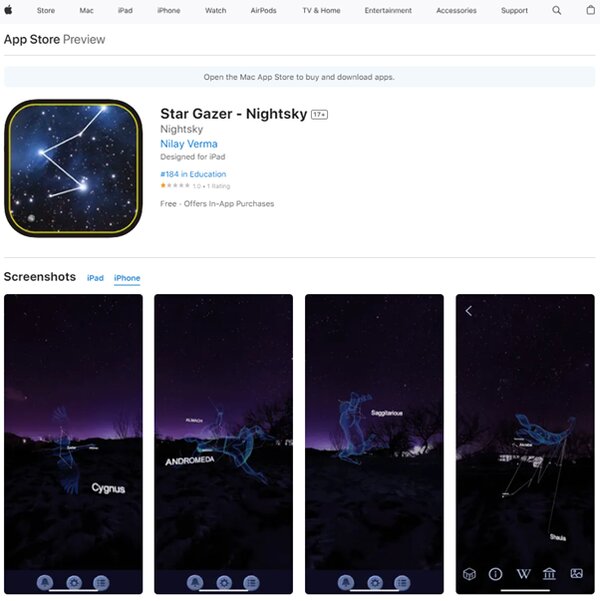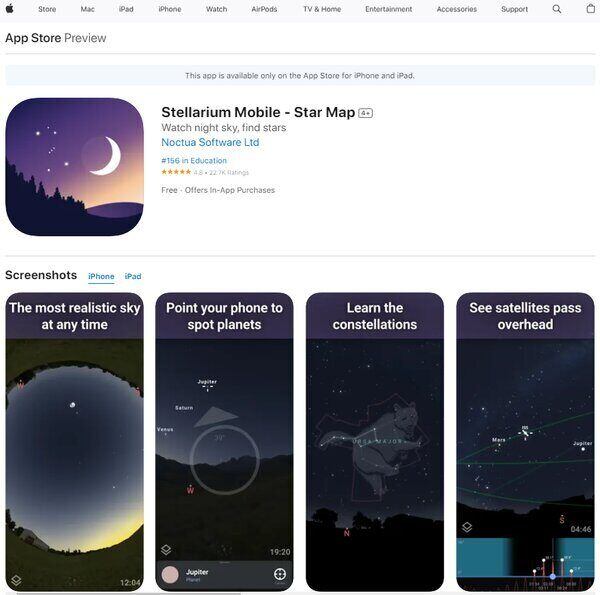9 Best Planet Identifying Apps
Planet Identifying App
Have you ever gazed up at the night sky, marveling at the twinkling stars and wondered about the planets orbiting in the vast expanse of space? With advancements in technology, identifying these celestial bodies has become more accessible than ever before. The fascination with the cosmos is not just limited to astronomers, it’s a shared curiosity among people of all ages. This shared interest has led to the development of the planet identifying app, a technology tool that has transformed our smartphones into portable planetariums. This planet identifying app not only enriches our understanding of the universe but also connects us more deeply with the wonders of the night sky.
The Need for Planet Identifying App
In our fast-paced world, where technology and science are advancing at an unprecedented rate, the need for planet identifying apps has never been more pronounced. These apps serve as a bridge between the cosmos and our curiosity, allowing us to explore the universe from the palm of our hands. They cater to a wide audience – from professional astronomers who use them for research and educational purposes to hobbyists and stargazers looking to enhance their skywatching experiences. The practical applications of these apps are vast, ranging from aiding in academic research to serving as educational tools in schools, fostering a love for astronomy among students. Moreover, they play a crucial role in making astronomy accessible to the visually impaired, offering auditory descriptions of celestial events and bodies.
The demand for these apps is driven by their ability to provide real-time data and visuals of the planets, stars, and constellations. With features like augmented reality (AR), users can simply point their devices towards the sky and receive detailed information about what they’re seeing, including the names of planets, their history, and significant astronomical events. This instant access to information not only satisfies our immediate curiosity but also encourages continuous learning and exploration. Furthermore, these apps have become invaluable tools for amateur astronomers and photographers, helping them plan their stargazing sessions and capture stunning celestial photographs.
The significance of planet identifying apps extends beyond individual curiosity. They play a crucial role in democratizing space exploration, making it accessible to everyone with a smartphone. This accessibility fosters a global community of space enthusiasts, encouraging collaboration and sharing of astronomical discoveries. Additionally, these apps contribute to citizen science projects, allowing users to contribute data that can aid in professional astronomical research. By tracking and reporting celestial phenomena, users of planet identifying apps can help scientists gather valuable data on topics such as light pollution, comet sightings, and the movement of asteroids.
In conclusion, the need for planet identifying apps is multifaceted, addressing both the innate human curiosity about the universe and the practical applications in education, research, and photography. These apps not only make astronomy accessible to a broader audience but also foster a sense of community among users, contributing to the collective understanding of our universe. As technology continues to evolve, we can expect these apps to become even more sophisticated, further enhancing our ability to explore and appreciate the cosmos.
9 Best Planet Identifying Apps
- Sky Guide
- Sky Tonight
- Star Map Tracker
- Star Tracker Lite
- Night Sky
- NASA
- Star Gazer
- Stellarium Star Map
- Satellite Tracker
How does Planet Identifying App work?
Planet identifying app is a technological tool designed to make astronomy accessible and enjoyable for everyone, from amateur stargazers to professional astronomers. This app utilizes the GPS, compass, and gyroscope on your device to determine your location and the orientation of your device relative to the Earth. When you point your device towards the sky, the planet identifying app calculates which part of the sky you are looking at and overlays images and information about stars, planets, constellations, and other celestial bodies visible from your location.
The core functionality of these apps is based on a detailed star map that is stored within the app or accessed online. This map includes positions of stars, planets, and other objects in the night sky. The app uses the current date and time, along with your geographical location, to display the correct portion of the sky. Some apps also offer an augmented reality (AR) view, using your device’s camera to overlay the star map on the live view of the sky, making it easier to identify celestial objects.
Advanced features may include the ability to track the movement of planets and stars over time, notifications about astronomical events such as meteor showers or eclipses, and detailed information about each celestial body. Some apps also allow you to view the sky from different points in time, either past or future, enabling you to see how celestial objects move and change.
How to choose a Planet Identifying App?
Choosing the right planet identifying app involves considering several factors to ensure that the app meets your stargazing needs and preferences. Firstly, assess the app’s user interface and ease of use. A clean, intuitive interface can enhance your experience, making it simpler to navigate the sky and access information.
The comprehensiveness of the app’s database is crucial. Look for an app that offers a wide array of celestial objects and detailed information about each, including mythology, scientific data, and visibility details. The quality of the augmented reality experience is also important, it should accurately align with the sky and provide a seamless view of the stars and planets.
Consider the app’s educational value, especially if you’re a beginner or if you plan to use the app for teaching purposes. Features like 3D models, stories, and the ability to view celestial events can be very beneficial for learning.
Another aspect to consider is the app’s customization options, such as filters for light pollution, different map views, and settings for notifications about astronomical events. Lastly, check if the app requires an internet connection for its features or if it can work offline, which can be handy for remote stargazing locations.
By considering these features and how they align with your interests and stargazing habits, you can select a planet identifying app that will provide you with a stellar experience exploring the night sky.
Planet Identifier
1. Sky Guide
Sky Guide is a planet identifying app designed to transform stargazing into an accessible and enlightening hobby for everyone. It leverages the power of Apple’s devices to provide an immersive experience in exploring the night sky. Whether you’re an amateur astronomer or simply curious about the cosmos, Sky Guide offers a user-friendly interface and a wealth of astronomical information at your fingertips.
What does Sky Guide do?
Sky Guide serves as a personal astronomy assistant, enabling users to identify stars, planets, constellations, and satellites with ease. By utilizing the device’s built-in compass, the app aligns with the night sky in real-time, providing a seamless and interactive way to navigate the celestial sphere. It’s packed with features that cater to both casual sky watchers and dedicated astronomy enthusiasts, offering a rich educational experience that’s as informative as it is visually stunning.
Sky Guide Key Features
Notifications: Sky Guide’s notification system is a standout feature, alerting users to upcoming astronomical events such as meteor showers, eclipses, and satellite passes. This ensures enthusiasts never miss out on significant celestial occurrences.
Astronomy News Articles: The app delivers high-quality, up-to-date astronomy news articles, keeping users informed about the latest discoveries and developments in space science.
Database Expansion: With in-app purchases, users can expand Sky Guide’s database, which includes additional constellations, deep-sky objects, and even exoplanets, providing a more comprehensive stargazing tool.
Dark Sky Finder: For those seeking the best stargazing conditions, the Dark Sky Finder helps locate areas with minimal light pollution, enhancing the visibility of celestial bodies.
Cinematic Tours: The app offers cinematic tours of the cosmos, allowing users to take guided journeys through space, exploring various celestial objects and phenomena.
Augmented Reality (AR) Mode: Sky Guide’s AR mode overlays constellation figures onto the real sky, making it easier for users to visualize and identify different structures in the night sky.
Offline Functionality: The app can function without Wi-Fi, cellular service, or GPS, making it a reliable companion for off-grid adventures and remote stargazing sessions.
Educational Content: Sky Guide is not just a tool for identification, it also provides educational content about the lore, history, and science behind each celestial object, enriching the user’s knowledge as they explore the night sky.
2. Sky Tonight
Sky Tonight is a planet identifying app designed to enhance the stargazing experience for both amateur astronomers and casual sky watchers alike. Developed by the creators of the acclaimed Star Walk apps, it offers a user-friendly interface that allows enthusiasts to explore the night sky with ease. Whether you’re curious about that bright dot in the sky or eager to learn about various celestial events, Sky Tonight serves as your personal guide to the cosmos. It leverages augmented reality (AR) technology to overlay a detailed sky map onto the real-world view captured by your device’s camera, providing a seamless and interactive way to identify stars, planets, constellations, and more. With features tailored to both beginners and seasoned stargazers, this app stands out for its ability to demystify the night sky, making astronomy accessible and enjoyable for everyone.
What does Sky Tonight do?
Sky Tonight transforms your smartphone into a powerful window to the universe. By simply pointing your device at the sky, the planet identifying app displays real-time positions of celestial bodies, making it easy to identify stars, planets, and constellations. Its AR mode enhances this experience by superimposing the sky map onto your surroundings, offering a captivating and educational view of the cosmos. Beyond identification, Sky Tonight provides extensive information about each object, including fascinating trivia and historical context. The app also keeps users informed about upcoming astronomical events, such as meteor showers and planetary alignments, with options to set reminders so you never miss out on these celestial spectacles. Whether you’re planning a stargazing expedition or just curious about what’s above, Sky Tonight is an invaluable companion for exploring the night sky.
Sky Tonight Key Features
Augmented Reality (AR) Mode: This feature overlays the app’s detailed sky map onto the live camera view, offering an immersive and interactive way to explore the night sky. It allows users to visually match the stars and planets they see in the app with those in the real world.
Real-Time Sky Map: Sky Tonight provides a dynamic and accurate representation of the night sky as it appears from your location, updating in real-time as you move your device around. This makes it incredibly easy to identify and learn about different celestial bodies.
Astronomical Event Reminders: The planet identifying app includes a calendar of celestial events, such as eclipses, meteor showers, and planet alignments. Users can set reminders for these events, ensuring they don’t miss any of the action in the sky.
Detailed Information on Celestial Bodies: Tapping on any star, planet, or constellation brings up detailed information about it, including scientific data, mythology, and trivia. This feature is perfect for those looking to deepen their knowledge of astronomy.
Customizable Viewing Options: Users can adjust various settings to tailor the sky map to their preferences, including constellation illustrations, brightness levels, and object visibility based on magnitude. This customization enhances the stargazing experience for users with different interests and equipment.
Stargazing Index and Weather Forecast: The app calculates a stargazing index based on factors like moon phase, light pollution, and cloud cover, helping users plan their observations. It also provides weather forecasts to ensure clear skies for stargazing.
3. Star Map Tracker
Star Map Tracker is a planet identifying app designed to enhance the stargazing experience for both amateur astronomers and curious sky watchers. It leverages the capabilities of modern smartphones to provide a real-time, augmented reality view of the night sky. By utilizing the device’s sensors, Star Map Tracker aligns the celestial map with the user’s point of view, offering an immersive exploration of stars, planets, constellations, and other celestial bodies. Despite its visual appeal and the promise of enriching the stargazing hobby, feedback suggests that the app may struggle with accuracy and responsiveness, particularly in tracking the moon’s position and calibrating to the user’s location.
What does Star Map Tracker do?
Star Map Tracker aims to demystify the night sky, making astronomy accessible to everyone. By simply pointing a smartphone towards the sky, users can identify celestial objects that are otherwise invisible to the naked eye or difficult to pinpoint. The planet identifying app provides detailed information about stars, planets, and constellations, enhancing educational value and engagement with astronomy. It’s designed to be a companion for night-time adventures, whether you’re trying to locate the Andromeda Galaxy, track the path of the International Space Station, or explore the craters of the moon from your backyard. However, it’s important to note that some users have reported challenges with the app’s functionality, such as inaccurate tracking and calibration issues.
Star Map Tracker Key Features
Visual Appeal: The app’s interface and celestial graphics are designed to be visually appealing, aiming to create an engaging user experience.
Augmented Reality: Utilizes AR technology to overlay a map of the stars and constellaries over the real sky as seen through the phone’s camera, providing an immersive learning tool.
Detailed Celestial Information: Offers in-depth details about various celestial bodies, including stars, planets, and constellations, to educate users and enhance their stargazing experience.
User-Friendly Interface: Designed to be intuitive, making it easy for users of all ages and experience levels to navigate and explore the night sky.
Customization Options: Allows users to customize their stargazing experience, including adjusting the app’s sensitivity and selecting which celestial bodies to display.
4. Star Tracker Lite
Star Tracker Lite is an engaging mobile planet identifying app designed to enhance the experience of stargazing for enthusiasts of all levels. By leveraging the capabilities of modern smartphones, this app transforms the act of looking up at the night sky into an interactive and educational adventure. Users are invited to simply point their devices towards the sky to unlock a detailed and visually stunning map of the stars, constellations, and other celestial bodies that are visible to the naked eye. The app’s intuitive design and user-friendly interface make it accessible to both beginners and seasoned astronomers, providing a seamless blend of entertainment and learning. With its emphasis on real-time sky tracking, Star Tracker Lite offers a unique opportunity for users to connect with the universe around them, making it a valuable tool for anyone looking to explore the wonders of the night sky.
What does Star Tracker Lite do?
Star Tracker Lite serves as a digital guide to the cosmos, enabling users to explore the celestial sphere with ease and precision. By utilizing the device’s orientation sensors, the app accurately mirrors the night sky on the screen, displaying stars, planets, constellations, and deep sky objects in their current positions. This real-time tracking allows users to identify and learn about various celestial phenomena directly through their device. Whether it’s locating a specific star, tracing the outline of a constellation, or discovering the planets in our solar system, Star Tracker Lite provides a comprehensive and immersive stargazing experience. The app also features a 3D compass in AR mode, enhancing the sense of direction and spatial orientation when navigating the night sky. With its rich graphical representations and detailed celestial database, Star Tracker Lite is an invaluable companion for anyone looking to deepen their understanding of the universe.
Star Tracker Lite Key Features
Offline Data: One of the standout features of Star Tracker Lite is its ability to function entirely offline. This means users can access the app’s extensive database of celestial objects without the need for an internet connection, making it perfect for remote stargazing adventures where connectivity might be limited.
Comprehensive Celestial Database: The app boasts a detailed database that includes the Sun, Moon, planets, 88 constellations, and over 8000 stars visible to the naked eye. This extensive collection ensures that users have a wealth of information at their fingertips, ready to enhance their skywatching experience.
AR Mode with 3D Compass: The augmented reality (AR) mode, complemented by a 3D compass, offers a dynamic way to explore the sky. By simply lifting the device and pointing it towards the sky, users can seamlessly track celestial objects in real-time, with the compass providing guidance on their location.
Automatic Location and Sky Tracking: Star Tracker Lite automatically detects the user’s location via GPS or allows for manual setting, ensuring that the sky map accurately reflects what is visible in the user’s immediate surroundings. The app also enters AR track mode automatically when the device is pointed upwards, making it effortless to start stargazing.
High-Quality Graphics: The app leverages the device’s retina display and employs full-screen anti-aliasing technology to deliver superb graphic quality. This results in a visually stunning representation of the night sky, enhancing the overall user experience.
User-Friendly Interface: Designed with ease of use in mind, Star Tracker Lite features an intuitive interface that auto-hides menus in AR track mode, allowing for an unobstructed view of the sky. This thoughtful design ensures that users of all ages and skill levels can navigate the app with ease.
Educational Value: Beyond its technical capabilities, Star Tracker Lite offers significant educational value. By making astronomy accessible and engaging, the app encourages users to learn more about the universe, fostering a deeper appreciation for the science behind the stars.
5. Night Sky
Night Sky is a powerful personal planetarium app designed to bring the wonders of the night sky to your fingertips. It allows users to quickly identify stars, planets, constellations, and satellites above by simply pointing their Apple devices towards the sky. Developed by iCandi Apps Ltd., Night Sky leverages augmented reality (AR) to project celestial information onto your surroundings, whether you’re gazing at the sky from your backyard or projecting the cosmos onto your ceiling indoors. The app’s intuitive interface and rich feature set make it accessible to both astronomy enthusiasts and casual stargazers alike.
What does Night Sky do?
Night Sky transforms your iOS device into a window to the universe. By utilizing your device’s sensors and location data, the app identifies celestial bodies in real-time, providing you with an interactive sky map. It’s not just about identification, Night Sky also offers educational content, allowing users to learn about the stars, planets, and constellations they discover. The planet identifying app includes a ‘Sky Tour’ feature, offering curated explorations of the cosmos, and supports AR experiences that bring space exploration into your living room. Whether you’re an aspiring astrophotographer or simply curious about the heavens, Night Sky serves as a comprehensive guide to the celestial sphere.
Night Sky Key Features
Generous Base Offering: Night Sky’s free version includes a wealth of information, allowing users to explore stars, planets, and constellations without any cost. The AR mode is also available for free, adding an immersive layer to your stargazing experience.
Sky Tours: Even in the free version, users can enjoy curated tours of the cosmos. These tours can be customized, providing a personalized journey through the stars.
User Interface: The app boasts an easy-to-use interface, suitable for complete novices. It provides a seamless experience for identifying and learning about various celestial bodies.
AR Functionality: Night Sky’s AR features are particularly impressive, allowing users to overlay the paths of celestial objects onto the sky in front of them, enhancing the stargazing experience.
360-Degree View: The app supports a 360-degree view, enabling users to see constellations that are not currently visible in their night sky by simply pointing their device downwards.
Educational Content: Tapping on celestial objects provides users with detailed descriptions, enriching the educational value of the app.
Light Pollution Filters: Users can adjust view filters to mitigate the effects of light pollution, making it easier to identify stars and constellations in urban environments.
Personalization: Night Sky recognizes common names for celestial objects, like ‘the big dipper,’ making it user-friendly for those not well-versed in astronomical terminology.
Connected Stargazing: A feature for premium users, this allows for shared stargazing experiences, even when participants are not in the same location.
High-Resolution Light Spectrums: The app includes high-resolution light spectrum filters, offering views of the sky in different wavelengths that are not visible to the naked eye.
Custom Sky Tours: With a Night Sky+ subscription, users can create and share their own custom sky tours, adding a social and interactive element to the app.
Common Names Recognition: The app’s search function understands commonly used terms for celestial objects, making it easier for beginners to navigate the sky.
6. NASA
NASA’s app serves as a gateway to the vast universe of space exploration and Earth observation, directly from your mobile device. This application offers an immersive experience that allows users to stay updated with the latest space missions, view thousands of stunning images and videos, and access a wealth of information about our planet and beyond. Designed to cater to both space enthusiasts and educational purposes, the app brings the wonders of the cosmos and the advancements of space technology to the palm of your hand. It’s a tool that not only educates but also inspires curiosity and a deeper understanding of the universe.
What does NASA do?
NASA, the National Aeronautics and Space Administration, is a beacon of innovation and exploration in the field of space and aeronautics. It is responsible for pushing the boundaries of human knowledge about space, Earth, and the universe. Through its various missions, NASA conducts scientific research, develops new technologies, and explores the solar system and beyond. Its endeavors range from sending astronauts to the International Space Station, roving the surface of Mars, studying Earth’s climate, to probing the depths of space. NASA’s work not only advances our understanding of the universe but also brings back technologies and data that benefit life on Earth in numerous ways, including improving weather forecasting, disaster response, and even medical technologies.
NASA Key Features
Live Streaming from The International Space Station (ISS): This feature allows users to view Earth from space in real-time, offering a unique perspective that was once only available to astronauts.
Vast Library of Images And Videos: The app provides access to over 14,000 images and a growing collection of videos that showcase NASA’s missions, the beauty of space, and the technology behind space exploration.
Mission Information and Updates: Users can stay informed about current, past, and future missions, including launch schedules, mission goals, and live updates, making it easier to follow along with NASA’s explorations.
Augmented Reality (AR) Experiences: Through AR, users can bring virtual models of NASA’s spacecraft into their own environment, offering an interactive way to learn about the technology that explores our universe.
Educational Resources: The app includes a wealth of educational content designed to inspire and educate users about space, science, and technology, making it a valuable resource for students, teachers, and anyone interested in learning more about NASA’s work.
Social Media Integration And News: It consolidates news and social media updates from NASA’s various feeds, providing a one-stop-shop for all NASA-related news, announcements, and social interactions.
No In-App Purchases: The app is completely free to download and use, with no hidden costs, making NASA’s wealth of information and resources accessible to everyone.
User-Friendly Interface: Designed with the user in mind, the app features an intuitive interface that makes it easy to navigate through the vast amount of content available, ensuring a seamless user experience.
7. Star Gazer
Star Gazer is an engaging mobile planet identifying app designed to bring the wonders of the night sky closer to users. With its user-friendly interface, the app offers a virtual planetarium experience, allowing users to explore various constellations, stars, and celestial events through their devices. It stands out for its detailed animations and graphics that provide a comprehensive view of the night sky, making it not only educational but also visually captivating. The app includes information on the significance, history, and myths associated with different celestial bodies, catering to users who are keen on learning about astronomy in an entertaining manner. Despite its appeal, some users have reported issues with its functionality and billing practices, which suggests room for improvement in terms of user experience and transparency.
What does Star Gazer do?
Star Gazer transforms your smartphone or tablet into a window to the cosmos. By leveraging advanced graphics and animations, it offers a detailed all-round view of the night sky, making it easy for users to identify and learn about various constellations and stars. The planet identifying app is designed to be both educational and entertaining, providing users with historical and mythological context behind the celestial formations they observe. Whether you’re an astronomy enthusiast looking to deepen your knowledge or a casual stargazer curious about the night sky, Star Gazer serves as a comprehensive guide. It aims to make astronomy accessible to a wider audience by turning complex astronomical information into engaging visual content.
Star Gazer Key Features
Detailed Constellation Graphics and Animations: The app provides beautiful and accurate representations of constellations, enhancing the learning and viewing experience by bringing the night sky to life on your screen.
Educational Content: It includes rich information about the significance, history, and myths associated with various celestial bodies, making it a valuable resource for those interested in the stories behind the stars.
User-Friendly Interface: Designed with the user in mind, the app offers a seamless navigation experience, making it easy for anyone to explore the cosmos without prior astronomical knowledge.
In-App Purchases: While the base version of Star Gazer is free, it offers additional features through in-app purchases, allowing users to customize their experience according to their interests and needs.
8. Stellarium Star Map
Stellarium Star Map is a planetarium and planet identifying app designed to bring the cosmos to your fingertips. This app transforms your mobile device into a window to the night sky, making it accessible for enthusiasts and professionals alike to explore the stars, planets, constellations, and other celestial bodies. With its user-friendly interface, Stellarium Star Map offers an accurate simulation of the night sky based on your location, date, and time. It caters to a wide audience by including features that appeal to both beginners in astronomy and seasoned stargazers. The app’s detailed celestial database, combined with high-quality visuals, ensures that users have a rich and educational stargazing experience. Whether you’re looking to identify a specific star, track the International Space Station, or simply marvel at the beauty of the Milky Way, Stellarium Star Map equips you with the tools to do so effectively.
What does Stellarium Star Map do?
Stellarium Star Map serves as a portable planetarium, offering a detailed and interactive representation of the night sky on your mobile device. It enables users to identify and learn about stars, constellations, planets, and deep sky objects in real-time. By utilizing the device’s sensors, the app can pinpoint your location to display an accurate sky map of celestial bodies as they appear in your part of the world. This feature is particularly useful for educational purposes, allowing users to gain insights into the cosmos directly from their backyard. Additionally, Stellarium Star Map supports a variety of sky cultures, offering constellation art and stories from different traditions around the globe. Its extensive database includes over 600,000 stars, planets, and deep sky objects, making it an invaluable resource for anyone looking to deepen their understanding of the universe.
Stellarium Star Map Key Features
Accurate Night Sky Simulation: Stellarium Star Map provides a realistic depiction of the night sky, tailored to the user’s specific location, date, and time. This feature ensures that what you see on your screen closely matches what you would see with the naked eye or through a telescope.
Extensive Celestial Database: The app boasts a comprehensive database that includes over 600,000 stars, planets, and deep sky objects such as nebulae and galaxies. This wealth of information is at the user’s fingertips, ready to explore.
Sensor Mode for Real-Time Identification: By leveraging the device’s sensors, Stellarium Star Map can identify celestial bodies in real-time as the user points their device towards the sky. This intuitive feature simplifies the process of locating and identifying stars, planets, and constellations.
Support for Multiple Sky Cultures: Recognizing the rich diversity of astronomical traditions, the app includes constellation art and stories from various cultures, including Western, Aztec, Chinese, and many more. This feature enriches the user’s experience by providing a broader perspective on how different societies view the night sky.
3D Rendering of Solar System Objects: Stellarium Star Map offers detailed 3D models of the major planets in our solar system and their satellites. This feature allows users to explore these celestial bodies in greater depth, enhancing their understanding of the solar system’s dynamics.
Night Mode to Preserve Night Vision: The app includes a night mode feature that adjusts the screen’s brightness and color scheme to red tones. This helps preserve the user’s night vision, making it easier to switch between observing the sky with the naked eye and using the app during stargazing sessions.
Customizable Viewing Options: Users can customize their viewing experience by selecting which celestial bodies to display, adjusting the level of detail, and choosing between different sky cultures. This flexibility allows for a personalized stargazing experience that can cater to the user’s specific interests and level of expertise.
9. Satellite Tracker
Satellite Tracker by Star Walk is a planet identifying app designed to bring the cosmos closer to users by providing real-time tracking of satellites, including the International Space Station (ISS). This app stands out for its ability to not only track satellites but also offer detailed information about their paths, flyby times, and visibility from the user’s location. It caters to both astronomy enthusiasts and casual sky watchers by combining user-friendly features with a wealth of educational content. The app’s interface is designed to be intuitive, allowing users to easily navigate through its features, such as selecting satellites from a comprehensive list, viewing their current location in the sky in real-time, and receiving notifications for upcoming satellite passes.
What does Satellite Tracker do?
Satellite Tracker empowers users to observe the International Space Station and other human-made satellites in real-time, directly from their mobile devices. It provides a detailed view of satellites’ current locations in the sky, along with their orbit paths around Earth. Users can select from a list of the most famous and brightest satellites, including SpaceX’s Starlinks, communications, and weather forecasting satellites. The planet identifying app offers a flyby timer and pass predictions, enabling users to know exactly when a satellite will be visible from their location. With customizable alerts, users can set notifications for satellite passes they don’t want to miss. The app also features different viewing modes, such as Globe view, Satellite View, and Sky view, enhancing the user experience by offering various perspectives of satellite trajectories and their positions relative to Earth.
Satellite Tracker Key Features
Real-Time Satellite Tracking: This core feature allows users to track the position of satellites, including the ISS, in real-time, offering an immersive experience of following these objects as they orbit Earth.
Comprehensive Satellite Database: The app includes a wide range of satellites, from communication and weather satellites to SpaceX’s Starlinks, providing users with extensive options for exploration and observation.
Flyby Timer and Pass Predictions: Users receive accurate predictions of when satellites will be visible in their location, along with a countdown timer for the next flyby, ensuring they don’t miss these events.
Customizable Alerts for Satellite Passes: This feature enables users to set personalized notifications for specific satellite passes, allowing for tailored viewing experiences based on individual interests.
Multiple Viewing Modes: With Globe view, Satellite View, and Sky view modes, users can enjoy different perspectives of satellites’ orbits and positions, enhancing their understanding and enjoyment of satellite tracking.
Educational Content: Satellite Tracker offers not just tracking capabilities but also educational insights into the satellites being observed, enriching users’ knowledge about these fascinating human-made objects in space.
FAQs on Planet Identifying App
What is a Planet Identifying App?
A Planet Identifying App is a mobile or desktop application designed to help users identify and learn about celestial bodies such as planets, stars, constellations, and satellites. By utilizing the device’s camera and augmented reality (AR) technology, these apps overlay a map of the sky onto the live view of the heavens, allowing users to point their device at the sky and see a labeled map of the stars and planets. They often include features such as a real-time sky map that updates as the device moves, detailed information about each celestial object, and the ability to select any date and time to view the position of stars and planets at different periods.
How does a Planet Identifying App work?
Planet Identifying App works by using the device’s sensors to determine the user’s location and the direction the device is pointing. With this information, the app can display a map of the sky for the user’s specific location and time, accurately showing where different celestial bodies are located. Many of these apps also use AR to superimpose this information onto a live view of the sky through the device’s camera, making it easier to identify stars, planets, and other objects. Users can interact with the map by swiping to pan, pinching to zoom out, or stretching to zoom in, and can tap on objects to learn more about them.
What are the main features of Planet Identifying Apps?
The main features of Planet Identifying Apps include a real-time sky map, AR stargazing, detailed information about celestial bodies, and the ability to view the sky at different times. Users can find stars, planets, constellations, and satellites by pointing their device at the sky. Some apps also offer additional features like notifications for astronomical events, night mode for easier viewing in the dark, widgets for quick access to sky information, and tools for planning observing sessions. Advanced features may include deep space exploration, interactive 3D space views, and the ability to control telescopes.
Can Planet Identifying Apps be used for educational purposes?
Yes, Planet Identifying Apps can be used for educational purposes. They are excellent tools for teaching and learning astronomy, as they provide an interactive way to explore the night sky and learn about various celestial bodies and astronomical events. Teachers can use these apps during astronomy classes to show students the location and movement of stars and planets, and to explain the science behind them. The apps’ detailed information about celestial objects, including their history, mythology, and scientific data, makes them valuable educational resources.
Are there any free Planet Identifying Apps available?
There are several free Planet Identifying Apps available, with some offering basic functionality at no cost and others providing more advanced features through in-app purchases or premium versions. For example, Sky Map is a completely free app that allows users to identify stars and planets without any payment required. Other apps may offer a free version with ads and an option to upgrade to a premium version for an ad-free experience and additional features. It’s important to note that while free versions are available, they may not include all the features found in paid versions.
Conclusion
Planet Identifying Apps have revolutionized the way we interact with the night sky, making astronomy accessible to both amateurs and seasoned stargazers. These apps harness the power of AR and real-time sky mapping to bring the cosmos to our fingertips, offering a wealth of information about celestial bodies and astronomical events. With features that cater to a variety of interests and skill levels, from simple identification to deep space exploration, these apps serve as both educational tools and gateways to the wonders of the universe. Whether you’re using a free version to dip your toes into stargazing or investing in a premium app for a more in-depth experience, the sky is literally the limit when it comes to discovering the mysteries of space with these innovative applications.

